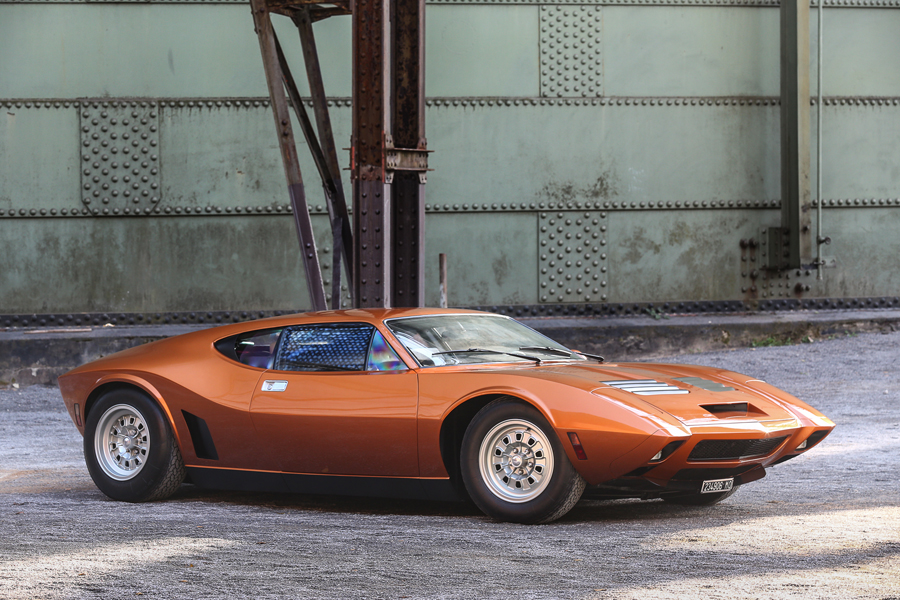While it was respected for producing sensible, economical cars, American Motors responded to declining market share in the mid-1960s with a change in focus to performance. Given new creative freedom, American Motors styling director Richard “Dick” Teague and his design team unleashed the bold “Project IV” concept cars that toured U.S. auto shows during 1966 and previewed AMC’s future designs, including the AMX that would debut alongside the sporty Javelin for 1968.
Momentum heightened in January 1967, when AMC chose Gerald C. Meyers as vice president of automotive development and manufacturing. In June 1967, Meyers gave Teague and his chief designer, Bob Nixon, approval to propose a radical mid-engine prototype in competition with a proposal from Italian stylist Giorgetto Giugiaro.
Teague and his staff replied with the AMX/2, itself succeeded by the AMX/3, which was selected for development. Italian engineer Giotto Bizzarrini, renowned for his own road and racing cars, as well as his prior work for Ferrari, Lamborghini, and Iso, performed chassis and suspension design.
BMW was tapped for engineering and testing, internally coding the AMX/3 as Project E18. Giugiaro’s ItalDesign would structurally perfect the steel semi-monocoque body. Bizzarrini and close collaborator Salvatore Diomante would assemble the AMX/3 through a new joint-venture company.
Chassis and body parts were purpose-designed, while other items were sourced from AMC and external suppliers. Power was supplied by AMC’s 390-ci V8 engine, rated at 340 hp and mated to a 4-speed gearbox/ rear transaxle supplied by OTO Melara.
BMW’s testing yielded high body rigidity, a state-of-the-art brake system, and improvements to the clutch.
Initial estimates projecting a run of 1,000 cars quickly shrank to 26, but the highly anticipated introduction of the AMX/3 at Rome on March 23, 1970 — one day before the launch of the Ford-powered DeTomaso Pantera — was a full success.
Before AMC canceled the project, five AMX/3s were completed.
Bizzarrini and Diomante built a sixth example from remaining components, which they hoped to market as the Sciabola (Sword).
Extensively researched with exceptional commitment, and beautifully restored, this stunning AMX/3 carries unbroken provenance from new — and a particularly fascinating early history as the Monza test car for the AMX/3 development program.
Following assembly, it was tested by BMW in Germany and then sent to Italy, where it was photographed at the legendary Monza circuit, where it exceeded the targeted 160-mph top speed and posted blistering lap times.
This car was a milestone, coming from a unique project that brought together some of the brightest minds in the automotive world of the late 1960s and 1970s.

